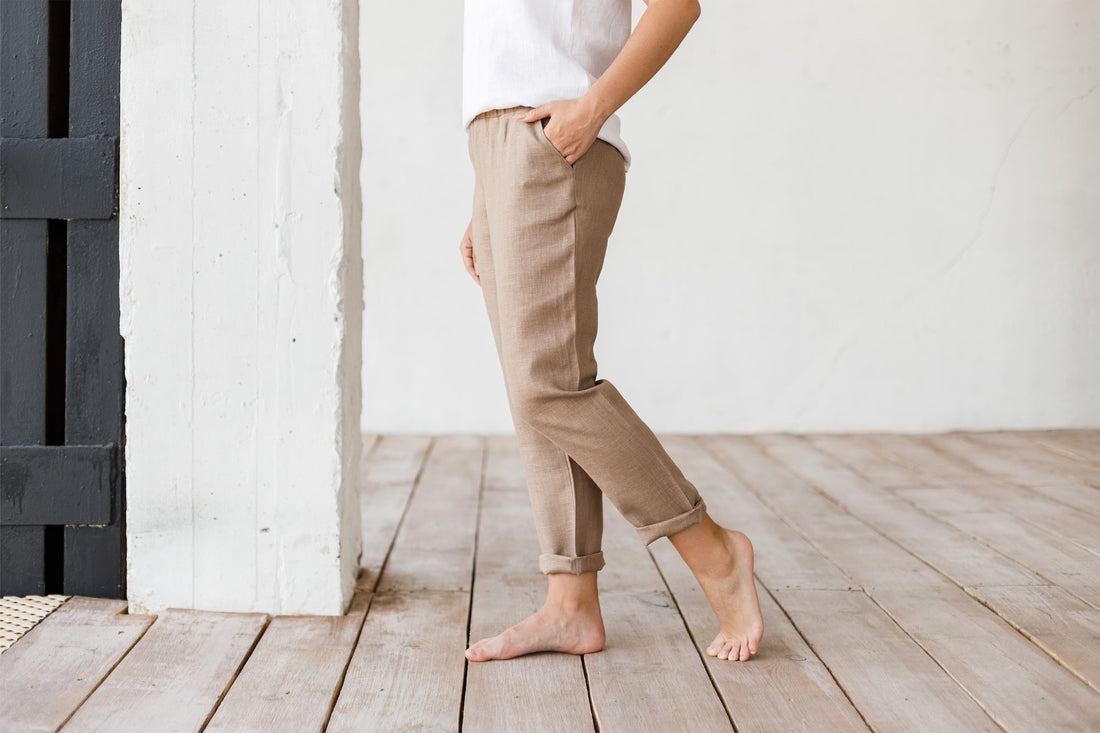The Comprehensive Guide to Linen Shrinkage: Preserving and Adjusting Your Favorite Fabric

Linen, a natural textile celebrated for its breathability and timeless appeal, has been a staple in homes and wardrobes for centuries. Derived from the resilient flax plant, linen’s unique properties make it both a delight and a challenge to care for. While its tendency to shrink can be a concern, understanding the nuances of this fabric allows you to maintain its beauty or intentionally tailor its fit. This guide delves into the science, care practices, and practical solutions for managing linen’s shrinkage, offering detailed insights for both new and seasoned linen enthusiasts.
Linen Shrinkage in the Dryer: Heat and Fiber Dynamics
Linen’s reaction to heat is rooted in the structure of flax fibers. When exposed to high temperatures in a dryer, the fibers contract as moisture evaporates rapidly, leading to shrinkage. This effect is most pronounced in raw, untreated linen, which hasn’t undergone pre-washing processes to stabilize the fabric. For example, a raw linen garment dried on high heat may shrink by up to 10%, altering its fit significantly.
To mitigate this, opt for low-heat drying cycles or air-drying. Many manufacturers pre-wash their linen products, reducing shrinkage to a mere 2–3% even when machine-dried. If using a dryer, remove linen while slightly damp and lay it flat to finish drying. This method preserves the fabric’s natural drape and minimizes fiber stress.
Washing Linen: Balancing Cleanliness and Fabric Integrity
The first wash is critical for untreated linen, as it is most susceptible to shrinkage. Hot water and vigorous cycles exacerbate fiber contraction, while cold water (below 86°F/30°C) and gentle settings help maintain the fabric’s original dimensions. Overloading the washing machine can also cause excessive friction, leading to uneven shrinkage or fabric distortion.
Pre-washed linen, commonly used in bedding and linen table runners, undergoes industrial processing to remove natural oils and relax fibers, resulting in more predictable behavior. Expect minimal shrinkage (3–5%) in pre-washed items, compared to 7–10% in raw linen. For delicate heirlooms or tailored garments, hand-washing in lukewarm water with a mild detergent offers the safest cleaning method.

Long-Term Shrinkage: How Linen Evolves with Use
After the initial wash, linen stabilizes significantly. Subsequent washes may cause subtle shrinkage (1–2%), particularly if exposed to heat. This gradual change occurs as residual tension in the fibers continues to relax. Over time, linen softens and develops a lived-in texture, often expanding slightly with wear before contracting again when washed. This dynamic makes linen garments uniquely adaptable, molding to the body while retaining their shape.
Pure Linen Shrinkage: The Impact of Fiber Purity
Pure, 100% linen lacks synthetic blends that resist shrinkage, making it more prone to contraction. For instance, a raw linen tablecloth measuring 40 inches pre-wash might shrink to 36 inches after its first hot wash. This underscores the importance of pre-treatment. Industrial pre-washing techniques, such as enzyme softening or stonewashing, not only reduce shrinkage but also enhance the fabric’s softness and luster.
Quantifying Shrinkage: What to Expect
Shrinkage in linen is proportional to its original size and treatment. Raw linen typically contracts by 7–10%, equivalent to one to two clothing sizes. A medium-sized shirt (40-inch chest) might fit closer to a small (37 inches) after washing. Pre-washed linen, however, shrinks marginally (2–5%), making it a reliable choice for consistent sizing.
For home textiles like curtains or linen fabric napkins, minor shrinkage (3–4%) is often negligible, as the fabric’s drape and functionality remain intact. Always account for shrinkage when measuring linen for custom projects, adding 5–10% to the initial dimensions.
Intentional Shrinkage: Tailoring Linen to Your Needs
Occasionally, slight shrinkage is desirable—to adjust a loose garment or tighten a sagging tablecloth. To achieve this, wash the linen in warm water (around 104°F/40°C) and tumble-dry on medium heat, checking the fit every 10 minutes. Be cautious: Excessive heat can stiffen fibers, altering the fabric’s hand feel. Test this method on an inconspicuous area first, as artisanal linens with unique weaving techniques may respond differently.
Sizing Strategies: When to Size Up
The decision to buy a larger size depends on the linen’s treatment and intended use. For raw linen, sizing up by one to two sizes accommodates initial shrinkage, especially for fitted items like dresses or suits. Pre-washed linen, however, can be purchased true-to-size, as major shrinkage has already occurred. For oversized or relaxed designs, consider your natural size, as linen softens and conforms to the body over time.
Consult product specifications for detailed shrinkage rates. Adjustable features like drawstrings or elastic hems offer flexibility, ensuring a comfortable fit as the fabric evolves.
Caring for Linen: Preservation Techniques
-
Storage: Fold linen neatly to avoid stretching; hanging heavy items like curtains can distort their shape.
-
Ironing: Press while slightly damp using medium heat for a crisp finish, or embrace natural wrinkles for a casual aesthetic.
-
Repairs: Mend loose threads promptly to prevent unraveling, using fine thread that matches the fabric’s weight.
Embracing Linen’s Natural Journey
Linen’s shrinkage is not a flaw but a characteristic of its organic origins. By understanding how heat, water, and fiber structure interact, you can confidently care for your linen pieces, whether preserving their original form or gently reshaping them. Many manufacturers offer pre-washed options, blending practicality with artisan craftsmanship.
In a world of fast fashion, linen stands apart as a testament to sustainability and longevity. Its ability to age gracefully—developing a softer hand and richer patina—makes each piece a narrative of use and care. By mastering these principles, you transform linen maintenance from a chore into an art, ensuring your textiles endure as both functional items and cherished heirlooms.
